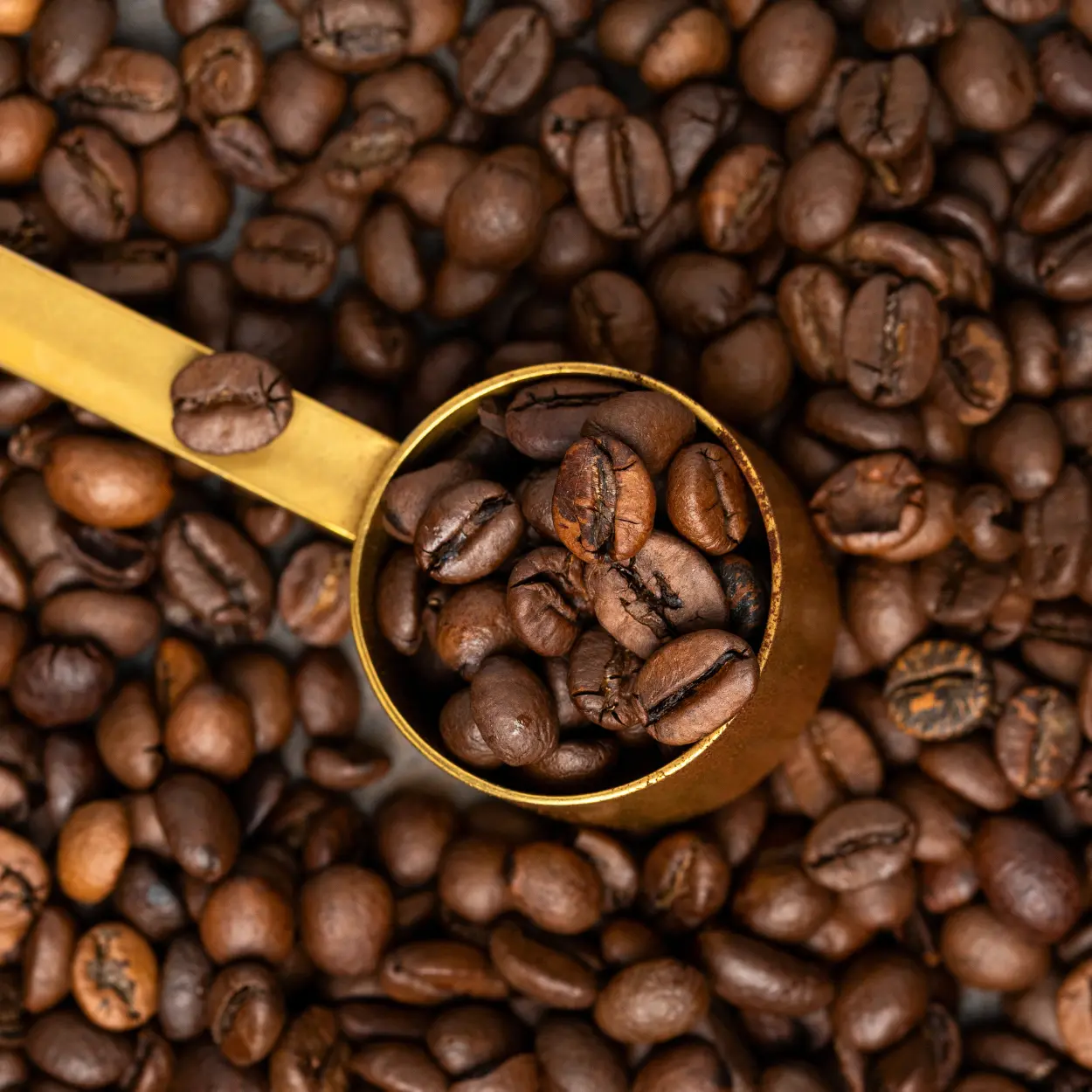Coffee, an elixir for many, is as much a science as it is an art. While we often find ourselves reaching out for that comforting mug each morning, how many truly pause to consider the intricacies of its preparation? How much coffee for 12 cups? is a question that might seem straightforward but delves deep into the heart of coffee brewing. From understanding the perfect balance of water and grounds to the eternal debate on how many scoops of coffee per cup is just right, this article seeks to unravel the beautiful complexities behind the art of coffee. So, whether you’re hosting a gathering or just ensuring your morning brew is consistently delightful, let’s embark on this caffeinated journey together.
12 Cup Coffee: Key Takeaway
- Precision and Balance: The right amount of coffee for 12 cups is pivotal, but it’s a balance of various factors like bean type, grind size, and brewing method.
- Beyond Quantity: While the number of scoops sets the foundational taste, other elements like water quality, freshness of beans, and brewing temperature further influence the flavor.
- Personal Preference: The art of coffee is subjective; what’s perfect for one might not suit another, making experimentation essential.
- Continuous Learning: As much as coffee is a daily ritual, it’s also a journey of discovery, with nuances and techniques waiting to be explored for the perfect cup.
How Much Coffee for 12 Cups?
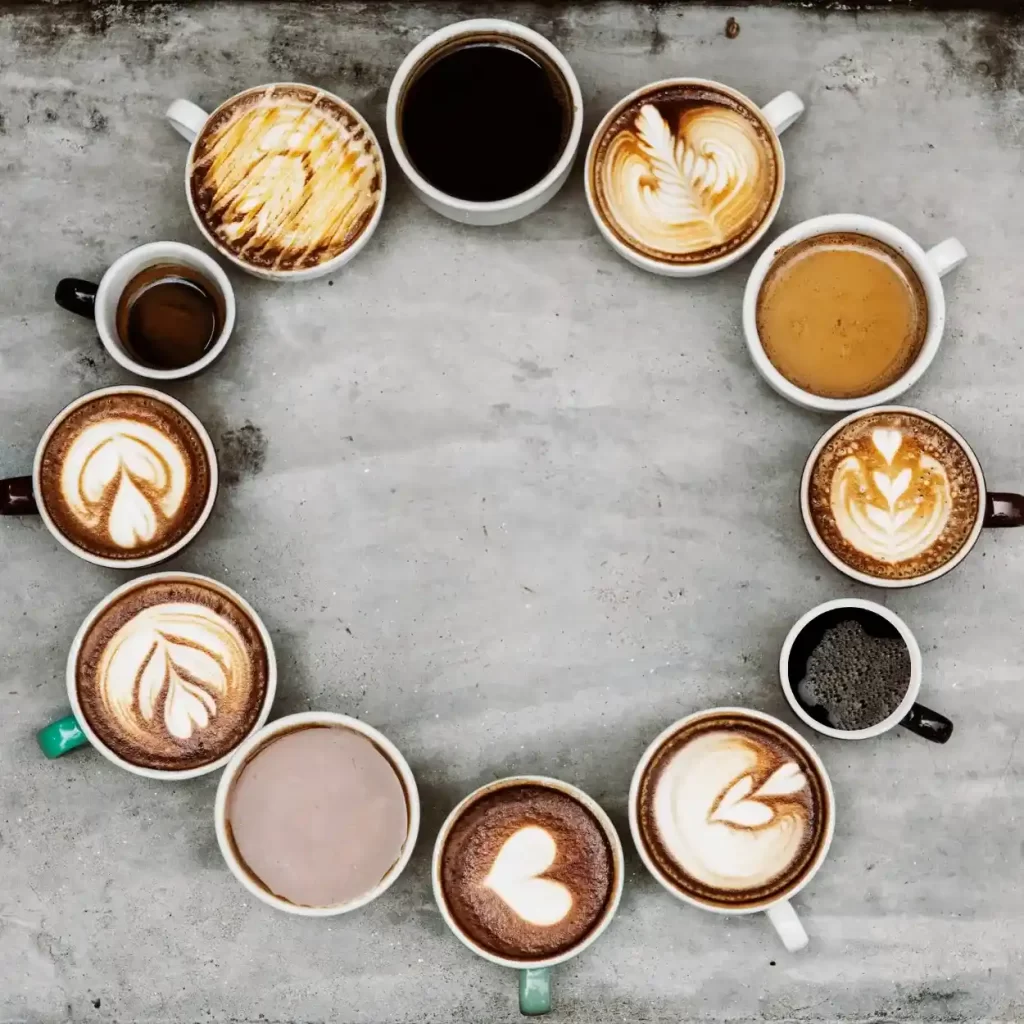
Making the perfect cup of coffee is an art combined with science. When brewing coffee for a larger group or preparing in bulk for the week, knowing the exact measurements can be the difference between a delightful or a disappointing brew. If you’ve ever pondered the question of how much coffee for 12 cups? you’re not alone. Let’s delve deeper into this topic, distinguishing between coffee beans and grounds.
How Much Coffee Beans for 12 Cups?
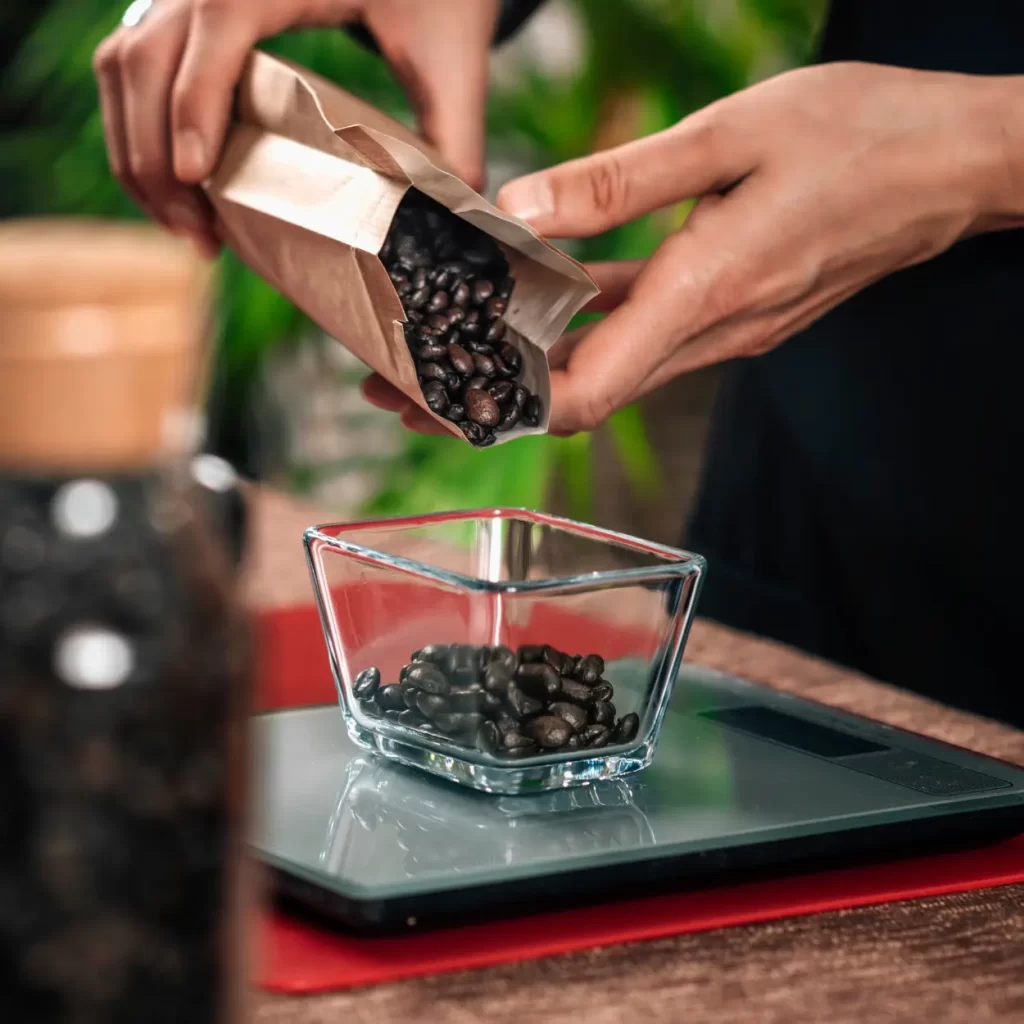
When using coffee beans, it’s essential to factor in the loss that comes with grinding. Whole coffee beans maintain their freshness and flavor longer than pre-ground coffee, but how many beans will you need for 12 cups?
- Measurement in Weight: On average, for a standard brew strength, you’ll require about 1 to 2 tablespoons of ground coffee per six ounces of water. Given that two tablespoons of coffee beans weigh approximately 10 grams, you’ll need about 115 to 150 grams of coffee beans for 12 cups.
- Factors Influencing Quantity: The exact quantity can vary based on:
- Bean Type: Different beans like Arabica and Robusta might have varied densities.
- Preferred Strength: If you prefer a stronger brew, you might lean towards the higher end of the recommended range.
How Much Coffee Grounds for 12 Cups?

If you’re using pre-ground coffee or grinding your beans in advance, the question arises: how much coffee grounds for 12 cups?
- General Guideline: As a standard rule, you would use about 1 to 2 tablespoons of coffee grounds for every six ounces of water. Thus, for 12 cups, you’ll need approximately 12 to 24 tablespoons of coffee grounds, depending on your desired strength.
- Factors to Consider: When using coffee grounds, keep in mind:
- Grind Size: Finer grinds may lead to a stronger flavor. So, if you’re using a very fine grind, you might need slightly less.
- Storage: Ground coffee can lose its flavor faster than whole beans. Ensure your coffee grounds are stored in an airtight container to maintain their freshness.
Whether you’re working with whole coffee beans or pre-ground coffee, understanding the right measurements is essential for achieving a consistent and delightful brew. Always adjust according to personal preference and enjoy the art of coffee-making.
The Science Behind Coffee Measurements

Coffee isn’t just about a casual morning ritual or a beverage to keep you awake. Like many gourmet foods and drinks, there’s a deep-rooted science behind achieving the perfect cup of coffee. The measurement of coffee grounds plays an intricate role in ensuring that your brew isn’t too weak or overly strong.
Why Measurements Matter in Coffee Brewing
When you ask yourself, how much coffee for 12 cups? you’re delving into a world where precision is crucial. The measurements in coffee brewing matter for several reasons:
- Consistency: Regularly measuring your coffee ensures that you get the same strength and flavor each time. This is essential if you’ve found that sweet spot where your coffee tastes just right.
- Balance: Coffee is a balance of flavors. Too much or too little coffee can upset this balance, leading to a brew that’s bitter, sour, or watery. The right measurement ensures that your coffee has a harmonious blend of taste notes.
- Economy: By measuring, you ensure that you use only as much coffee as you need, preventing wastage and saving money in the long run.
Differing Opinions on the Ideal Coffee Scoop Size
There isn’t a universal consensus on the ideal scoop size, leading to a fascinating debate among baristas and coffee lovers. Some common perspectives include:
- Standard Scoop: Most people consider a standard coffee scoop to be equal to two tablespoons. However, some argue that a scoop should be slightly less to account for the coffee’s density.
- Golden Ratio: Some experts believe in the “Golden Ratio” of coffee brewing, which often recommends two level tablespoons (or roughly 10 grams) of coffee for every six ounces of water. But remember, this might not always align with how many scoops of coffee per cup, especially when brewing larger quantities.
- Personal Preference: At the end of the day, the ideal scoop size can come down to personal preference. Some enjoy a stronger brew and might use a heaped scoop, while others prefer a milder taste and opt for a slightly smaller scoop.
The Relationship Between Coffee Type and Required Scoops
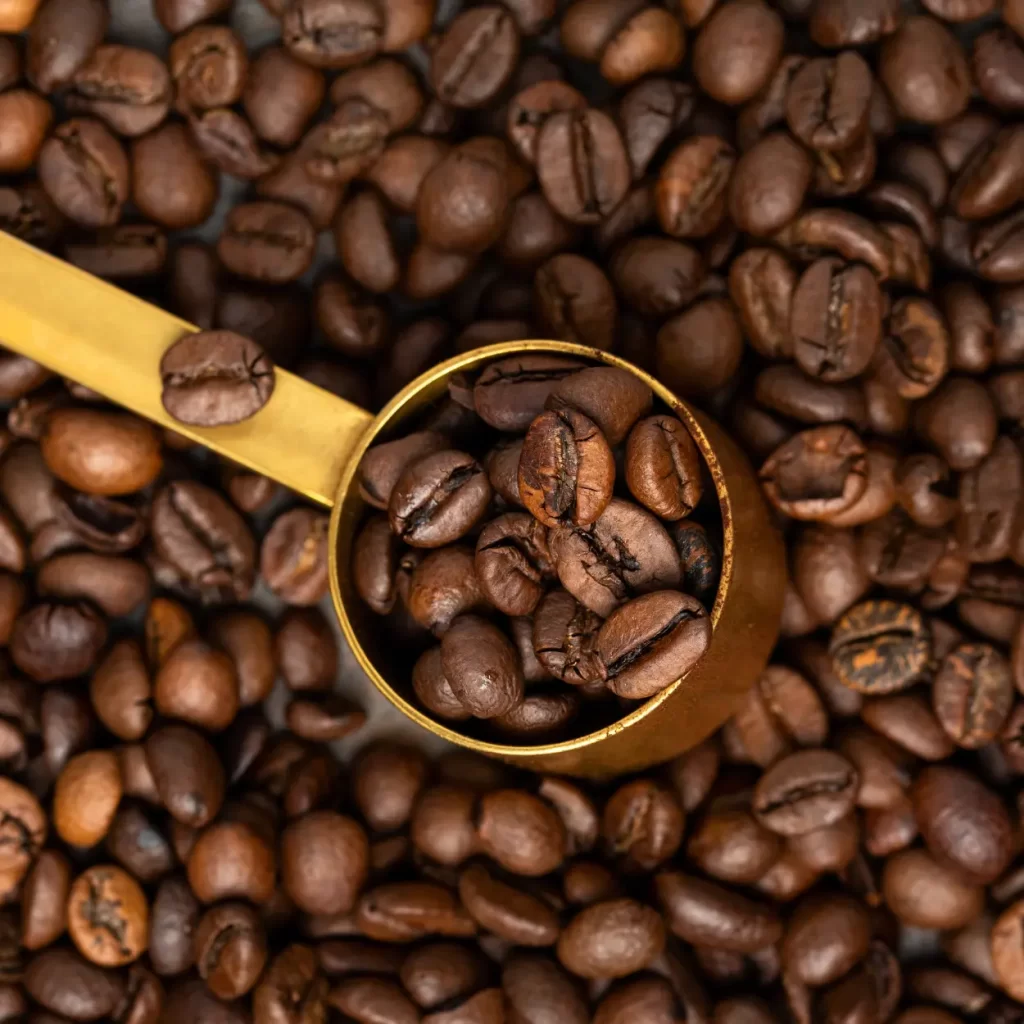
The type of coffee you choose plays a pivotal role in determining the number of scoops required. Here’s why:
- Bean Density: Different coffee beans have different densities. For instance, Arabica beans are more dense than Robusta beans. This means you might need more scoops of Robusta for the same strength compared to Arabica.
- Roast Level: Dark roasts are denser and often have a more pronounced flavor than light roasts. So, you might require fewer scoops of a dark roast to achieve a strong flavor.
- Grind Size: Fine grinds extract flavors faster than coarse grinds. If you’re using a fine grind, you might need fewer scoops to get a robust flavor compared to using a coarse grind.
Understanding the science behind coffee measurements can significantly elevate your coffee experience. It ensures that each cup you brew resonates with the perfect symphony of flavors, catered precisely to your liking.
Perfecting the Coffee-to-Water Ratio
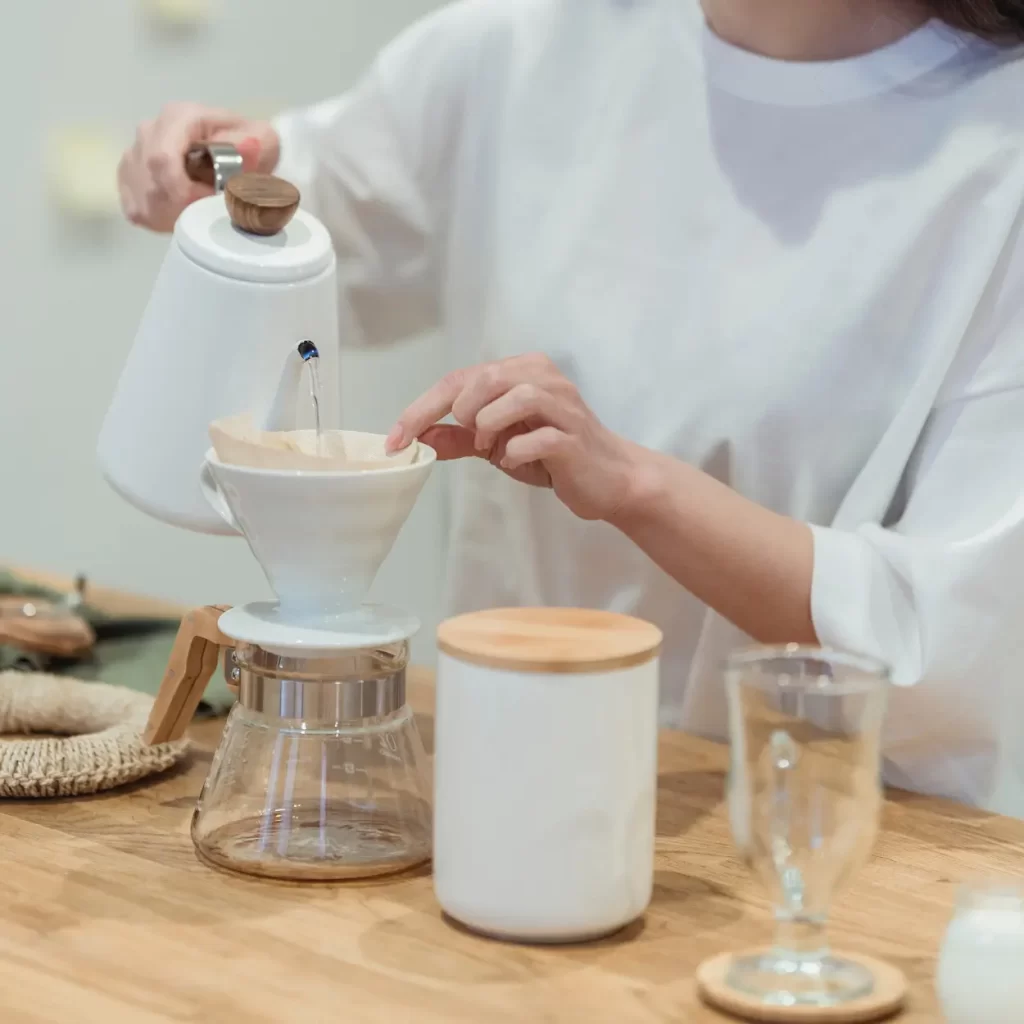
One of the most pivotal elements in crafting a delightful cup of coffee is understanding and perfecting the coffee-to-water ratio. While many casual drinkers might overlook this detail, a true coffee aficionado knows that the difference between a mediocre and an outstanding brew often lies in this crucial balance.
Historical Perspectives on Coffee Ratios
Delving into the annals of history, we discover that our ancestors had their unique takes on the ideal coffee-to-water ratio:
- Ancient Coffee Houses: In the bygone era of 16th-century coffee houses, particularly in the Middle East, coffee was often brewed much stronger than what many Western cultures are accustomed to today. The coffee served was thick and potent, emphasizing the coffee’s robust nature rather than its subtlety.
- European Traditions: As coffee made its way to European shores, particularly in places like Italy and France, there was a gradual shift. The ratio began favoring a milder blend, focusing more on the nuances and flavors of the beans. This is where the question of “how many scoops of coffee per cup?” became more nuanced and varied across regions.
- Modern-Day Preferences: Over time, as coffee became a global phenomenon, the ratio underwent numerous transformations. Today, we find a blend of the old and the new, with coffee shops offering everything from concentrated espresso shots to milder, watered-down versions of the brew.
Impact of Water Quality on Coffee Taste
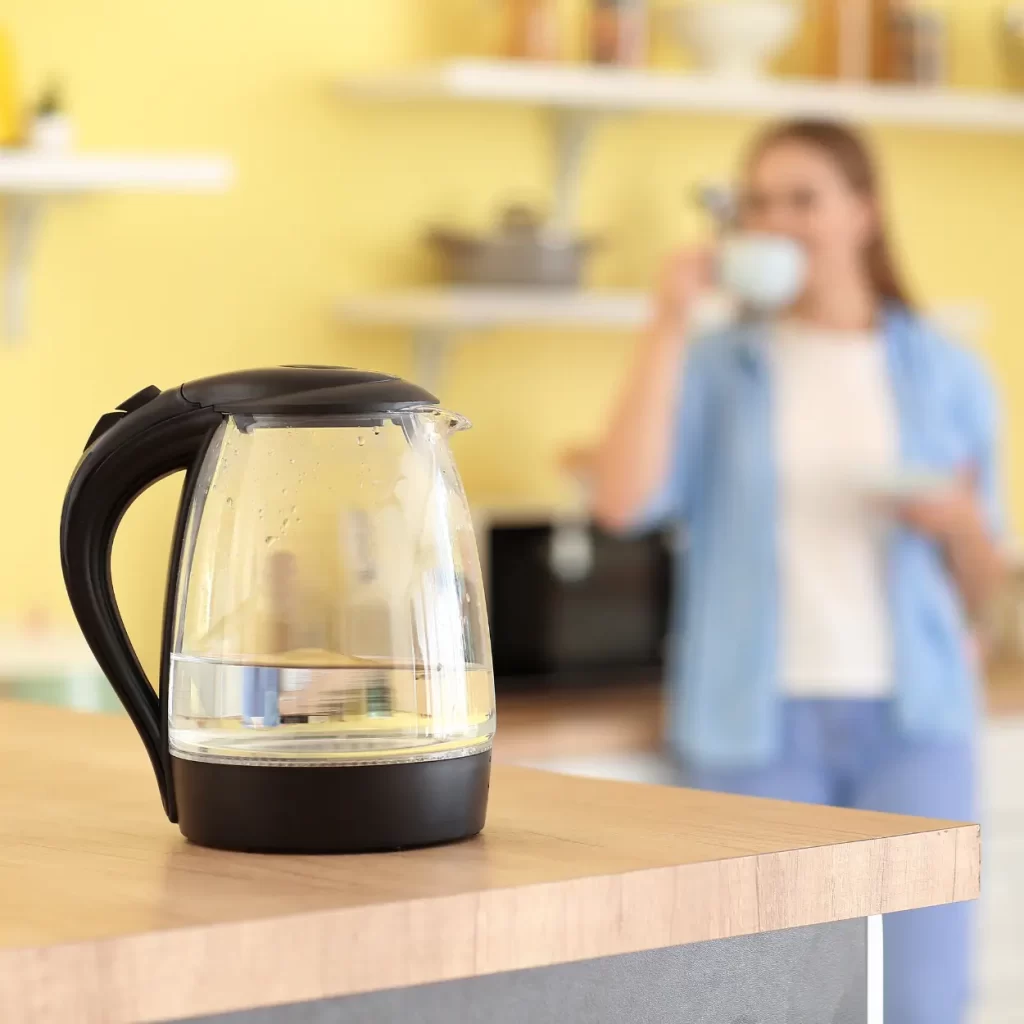
Water isn’t just a solvent for coffee; it’s an active ingredient that plays a significant role in the final taste of your brew:
- Mineral Content: In instances where water contains chemicals or minerals, it can result in a noticeable metallic scent or a pleasant sugary flavor. Additionally, the aroma and taste of the coffee might diverge from the anticipated norm. Excessive mineral presence within the water can potentially impart a gritty sensation to the mouth when consuming the coffee. Nevertheless, when these elements are present in appropriate amounts, they play a vital role in bestowing coffee with its abundant fragrance and flavor. Through the implementation of effective filtration techniques, it becomes feasible to manage the mineral composition of the water, thereby achieving the desired flavor characteristics. (1)
- pH Levels: Neutral or slightly alkaline water is often considered best for brewing coffee. Highly acidic or alkaline water can either make your coffee sour or excessively bitter.
- Purity: Chlorinated or impure water can infuse undesirable tastes into your coffee. Always ensure you’re using filtered or bottled water to maintain the integrity of your coffee’s flavor.
Balancing Strength and Flavor: The Golden Ratio
While individual preferences play a vital role, there’s a widely accepted standard in the coffee world often referred to as the “Golden Ratio.”
- Standard Guideline: As mentioned above, the general rule of thumb that many baristas swear by is using approximately 1 to 2 tablespoons of coffee for every six ounces of water. This ratio provides a balance, ensuring the coffee isn’t overpoweringly strong yet retains its core flavors.
- Flexibility: However, this ratio isn’t set in stone. Some prefer a bolder taste, opting for a higher coffee concentration, while others lean towards a milder brew. Always adjust based on your palate.
- Consistency is Key: Once you find your personal golden ratio, consistency in measurements will ensure a perfect cup every time.
Understanding and perfecting the coffee-to-water ratio is both an art and a science. It’s about respecting traditions, acknowledging individual tastes, and aiming for that harmonious blend where every sip is a testament to perfection.
Common Mistakes When Measuring Coffee

The pursuit of a perfect cup of coffee often leads us down a path of trial and error. While mastering the craft is rewarding, it’s not uncommon to stumble upon certain pitfalls along the way. Here, we shed light on some frequent missteps coffee enthusiasts make when measuring their brew and how to steer clear of them.
Overlooking the Importance of Grind Size
The texture of your coffee grounds, often referred to as coffee grind size, can significantly impact the flavor extraction during brewing:
- Inconsistent Grinding: One of the most common errors is using unevenly ground coffee. When coffee particles are of different sizes, they don’t extract uniformly. This can lead to a brew that’s both over-extracted (bitter) and under-extracted (sour) at the same time.
- Mismatch with Brewing Method: Different brewing methods demand different grind sizes. For instance:
- Espresso: Requires a fine grind.
- French Press: Calls for a coarse grind.
- Drip Coffee: Best with a medium grind.
- Using the wrong grind size for a particular method can greatly alter the taste and strength of your coffee.
- Freshness Factor: The finer the grind, the faster coffee loses its freshness. If you grind coffee too early and don’t use it promptly, you risk a stale-tasting brew.
The Perils of Using Different Scooping Tools
Precision matters when crafting a cup of coffee:
- Varied Volumes: Not all scoops are made equal. Some might hold two tablespoons, while others might hold less or more. Using different scoops without acknowledging this variance can save your coffee-to-water ratio.
- Eye-Balling Measurements: Guesstimating might work for seasoned baristas who’ve honed their instincts over the years. However, this can result in wildly inconsistent brews for the average coffee lover.
- Material Matters: The material of the scoop can influence the static and cause grounds to stick, leading to inaccurate measurements. It’s always wise to ensure your scoop is dry and clean.
Not Adjusting for Personal Taste Preferences
At the heart of coffee brewing is personal preference. While guidelines provide a good starting point, they shouldn’t overshadow individual tastes:
- Strength Preferences: If you love a robust, punchy cup of coffee, you might find standard recommendations too mild. On the other hand, those who prefer a gentler brew might find typical measurements too overpowering.
- Flavor Profile Adjustments: Depending on the coffee bean origin and roast type, you might need to tweak your measurements to best highlight the flavor notes. For example, a dark roast might require less coffee compared to a light roast to achieve a balanced flavor.
- Feedback Loop: Always take note of your reactions to each brew. If something feels off, don’t hesitate to tweak the measurements in your subsequent brews.
While measuring coffee might seem straightforward, there’s an underlying complexity that, when mastered, can elevate your coffee experience. By being aware of these common mistakes and learning to navigate around them, every cup you brew will inch closer to perfection.
Factors Influencing Coffee Taste Beyond the Scoop
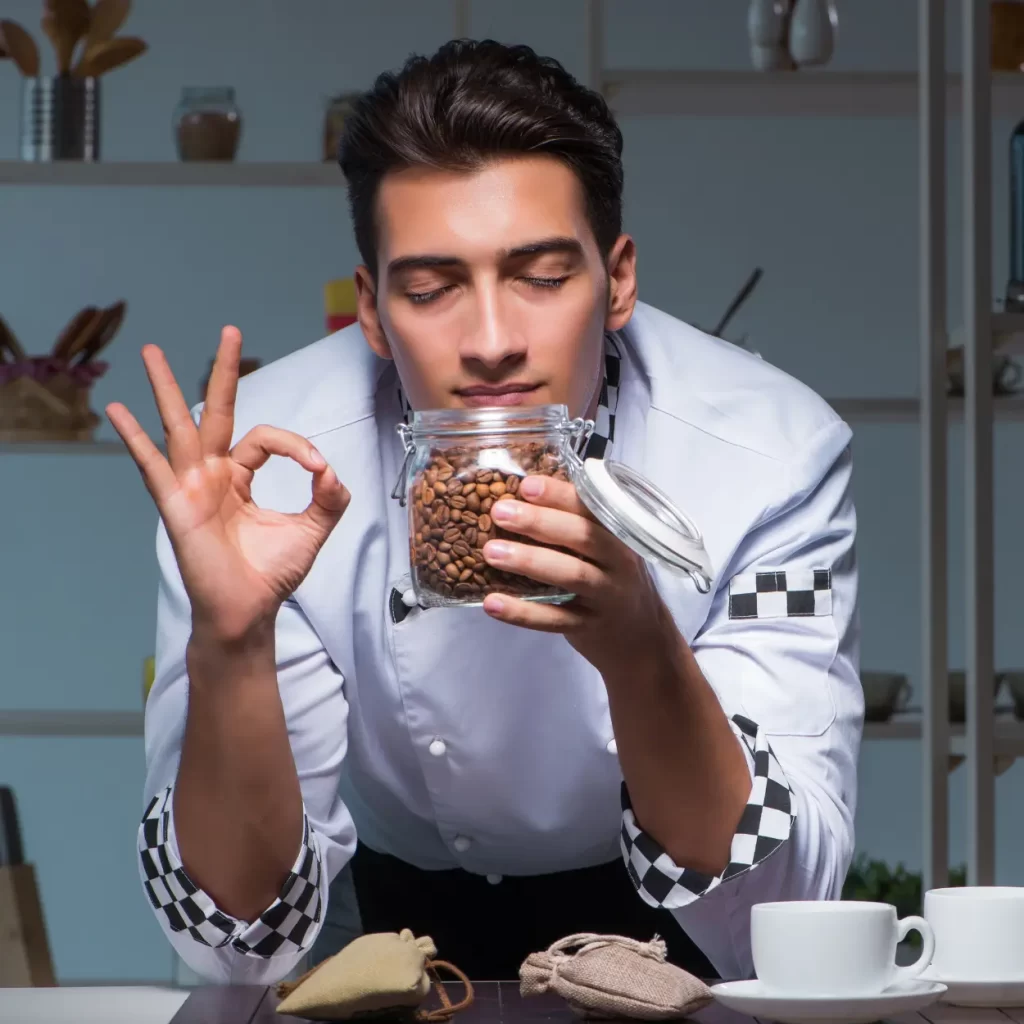
While the quantity of coffee is undeniably pivotal in determining the taste of your brew, there’s a multitude of other factors that play an equally significant role. To truly comprehend the intricacies of coffee flavor, we must delve into these often-overlooked elements that can drastically transform your cup of joe.
The Role of Freshness: Beans and Grounds
Freshness is paramount when seeking the richest coffee experience:
Bean Storage:
- Lifespan: After roasting, coffee beans have a peak flavor window. Depending on storage conditions, this can range from a week to a month.
- Preservation: Storing coffee beans properly is crucial. Seal them in an airtight container, preferably away from light and moisture, to prolong their freshness.
- Ground Coffee vs. Whole Beans: Ground coffee deteriorates faster due to increased surface area exposed to oxygen. For optimal freshness, grind beans just before brewing.
- Degassing Period: After roasting, beans release carbon dioxide, a process known as degassing. Using them immediately post-roast can lead to a sour taste. It’s best to wait a couple of days post-roasting before brewing.
Brewing Techniques and Their Influence
The method by which you brew your coffee can significantly dictate its taste:
- Drip Brewing: A popular method in the US, drip brewing creates a clean and straightforward cup. The slow passage of water through the grounds allows for a balanced extraction.
- French Press: Known for producing a bold and full-bodied brew, the French press immerses coffee grounds in water. This method often leaves some fine coffee sediments in the cup, adding to its robust nature.
- Espresso: Using pressurized water to extract flavors, espresso creates a concentrated and intense coffee shot. The method emphasizes the coffee’s deeper notes and often exhibits a creamy crema on top.
- Cold Brew: Grounds are steeped in cold water for an extended period (usually 12-24 hours). The result is a smooth and mellow coffee concentrate, less acidic than its hot counterparts. (2)
Temperature’s Impact on Extraction and Flavor
Understanding the nuances of temperature is key to unlocking coffee’s full flavor potential:
- Optimal Range: Most experts agree that the coffee brewing temperature should lie between 195°F (90°C) and 205°F (96°C). Within this range, the water extracts flavors efficiently without scalding the coffee.
- Too Hot: Water that’s too hot can over-extract the coffee, leading to bitter flavors and killing the nuanced notes of the beans.
- Too Cold: On the other hand, water that’s too cool might not extract enough flavor from the beans, leading to a weak or underdeveloped brew.
- Consistency is Crucial: Maintaining a consistent temperature during the brewing process ensures that the extraction is even, producing a balanced cup.
In summation, while the amount of coffee used is undoubtedly essential, a holistic approach that considers freshness, brewing methods, and temperature will invariably lead to a more satisfying and flavorful coffee experience.
Conclusion
In the tapestry of coffee culture, every thread has its unique significance. From the beans’ origin to the brewing method, each element shapes the final cup. However, the foundational question is: How many scoops of coffee for 12 cups? serves as a guidepost for many in their pursuit of the perfect brew. It’s not just about quantity, but understanding the harmony between each element. As we’ve journeyed through the art of coffee, it’s evident that while measurements provide a roadmap, the true essence lies in personal preferences, experimentation, and the joy of the process. So, the next time you set out to brew a pot, remember that every cup holds not just a beverage but centuries of history, tradition, and passion.
FAQ
Why is the coffee-to-water ratio so crucial for the taste?
The coffee-to-water ratio balances extraction, ensuring a brew that's neither too weak nor overly bitter.
Can the type of coffee bean influence the number of scoops required?
Yes, different bean varieties and roast levels can require adjustments in scooping to achieve the desired flavor.
How does grind size impact the coffee brewing process?
Grind size affects extraction speed; finer grinds extract faster and can lead to over-extraction, while coarser grinds might under-extract.
What global coffee traditions influence how we measure and brew our coffee?
Global traditions, from Italy's precise espresso shots to Turkey's unfiltered preparation, shape our brewing methods and measurement preferences.
